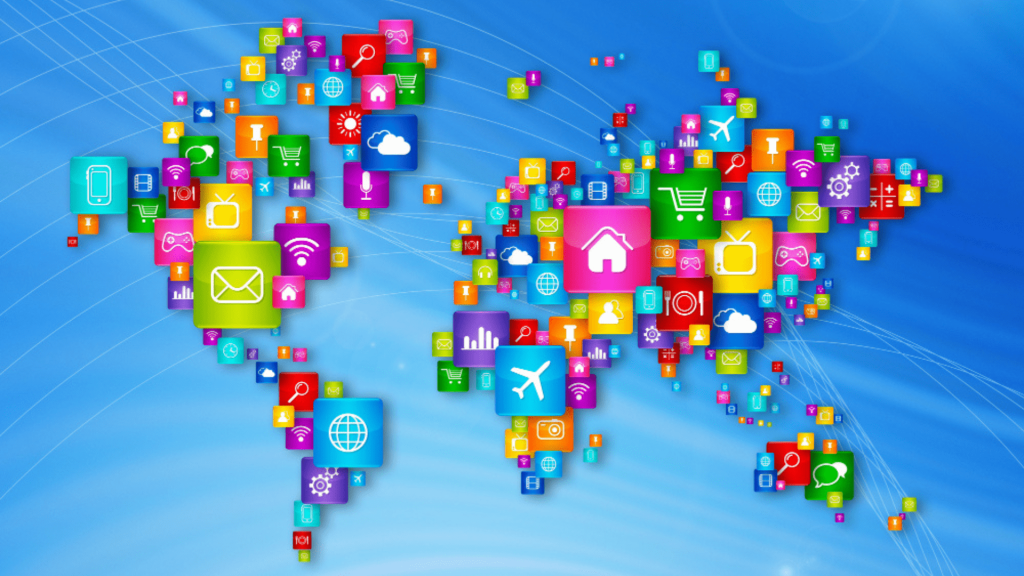Are you spending thousands on ads that don’t convert? Most businesses waste a significant portion of their marketing budget daily. They consistently target the wrong customers in the wrong locations. Geo marketing solves this expensive problem by targeting customers precisely.
Imagine knowing exactly where your best customers shop. Picture sending them offers when they walk near competitors. This isn’t science fiction; it’s geo marketing reality. Smart businesses utilize location data to increase sales significantly.
Traditional marketing shoots arrows in complete darkness, hoping something hits. Geo marketing gives you laser-guided precision targeting instead. You reach customers at perfect moments and locations. This approach typically increases conversion rates.
This guide reveals why geo marketing transforms struggling businesses. You’ll discover proven strategies that major brands use. We’ll show simple steps to implement location targeting. You’ll learn how to significantly reduce advertising waste. Most importantly, you’ll understand why competitors are succeeding. Ready to stop wasting money on ineffective advertising?
What is Geo Marketing and Location-Based Targeting?
Modern businesses require more effective ways to connect with customers. Traditional advertising methods are more expensive and less effective. Location intelligence provides the missing piece for marketing success.
Geo-marketing utilizes customer location data for targeted advertising. Think of it like having a GPS. Instead of finding directions, you find perfect customers. Location-based targeting automatically connects businesses with nearby consumers.
This marketing approach relies on several key technologies:
| Technology | Function | Business Application |
| GPS Tracking | Precise location data | Store visit tracking |
| Wi-Fi Signals | Indoor positioning | Mall/venue targeting |
| Bluetooth Beacons | Micro-location targeting | Product-level promotions |
| IP Geolocation | Web visitor locations | Online local campaigns |
Advanced web developers integrate these technologies into business applications. Modern software development teams build location-aware marketing platforms. These systems process millions of location signals daily.
Key Components of Location Intelligence
- Geofencing marketing creates virtual boundaries around business locations
- Proximity marketing triggers messages when customers approach stores
- GPS marketing tracks customer movement patterns throughout day
- Demographic mapping identifies customer characteristics by neighborhood
AI tools analyze location patterns to predict customer behavior. Machine learning algorithms identify the best times for engagement. AI chatbots can provide location-specific customer support automatically.
Transform Your Marketing ROI with Geo Marketing Benefits
Location-based marketing delivers measurable results that traditional methods cannot match. Smart businesses leverage geographic data to maximize advertising investments. The returns speak for themselves, as evidenced by increased sales.
Enhanced Customer Targeting Gets Better Results
Geographic segmentation categorizes customers based on their specific locations and behaviors. This precision enables businesses to understand local consumer preferences better. Different neighborhoods show distinct shopping patterns and income levels.
Key targeting advantages include:
- Behavioral insights reveal when people visit locations regularly
- Demographic precision targets right age groups in neighborhoods
- Competitive intelligence identifies areas with loyal customer bases
- Market positioning helps businesses compete against local rivals
Web development teams create custom dashboards showing location analytics. These platforms help businesses visualize customer geographic patterns. Software development solutions seamlessly integrate multiple data sources.
Increased Engagement and Conversions Boost Sales
Personalized messaging utilizes location data to deliver highly relevant offers. Customers receive deals for nearby restaurants during lunch. They receive discounts for upcoming local events. These timely interactions happen when customers need them.
Engagement strategies that work:
| Strategy | Description | Conversion Impact |
| Real-time notifications | Messages sent at perfect moments | +250% engagement |
| Proximity campaigns | Offers when near stores | +180% foot traffic |
| Local relevance | Community-focused messaging | +150% trust scores |
| Mobile optimization | Location-aware experiences | +200% mobile sales |
Cultural adaptation helps businesses connect with diverse populations. This personal approach significantly increases long-term customer loyalty.
Cost-Effective Marketing Spend Saves Money
Reducing advertising waste happens when targeting specific areas only. Businesses eliminate spending on irrelevant distant locations. Higher conversion rates naturally result from location-qualified prospects.
Budget optimization benefits:
- Focus resources on high-performing geographic regions exclusively
- Track performance metrics for each location separately
- Measure ROI improvements through detailed geographic analytics
- Allocate budgets based on proven location success data
Marketing dollars work harder when spent on ready customers. Location targeting eliminates the waste of a broad audience approach.
Proven Geo Marketing Strategies for Business Growth
Successful geo marketing requires implementing proven strategies systematically and consistently. These approaches have helped thousands of businesses increase revenue. Expert web developers often recommend starting with simple implementations.
Geofencing and Proximity Marketing Drive Foot Traffic
Virtual boundaries create invisible geographic perimeters around business locations. These automated systems trigger personalized messages when customers enter. Strategic placement maximizes customer engagement and foot traffic.
Effective geofencing applications:
- Competitor geo-conquesting targets customers visiting rival business locations
- Event-based targeting captures audiences at concerts, festivals, and sports venues
- Retail applications work perfectly in shopping malls and stores
- Service reminders notify customers when orders are ready
AI tools optimize geofence sizes based on foot traffic patterns. Machine learning determines optimal message timing for conversions. Software development teams regularly build custom geofencing solutions.
Local SEO and Search Marketing Increase Visibility
Google My Business optimization significantly improves local search rankings. Map searches connect businesses with nearby customer queries instantly. Location-based keywords effectively capture “near me” searches.
Local SEO essentials include:
| Component | Purpose | Implementation |
| Google My Business | Local visibility | Complete profile optimization |
| Location keywords | Search targeting | “Near me” + city names |
| Local content | Community relevance | Regional news, events |
| Review management | Reputation control | Response monitoring |
Web development experts create location-specific landing pages for cities. These pages rank higher in local search results. AI chatbots can automatically answer location-specific customer questions.
Social Media Geo-Targeting Builds Community
Platform-specific features enable the effective execution of precise local advertising campaigns. Facebook local ads reach customers within specific zip codes. Instagram location tags naturally create community-focused content strategies.
Social media geo-targeting strategies:
- Influencer partnerships with local micro-influencers and brand ambassadors
- User-generated content encourages location-based hashtags and customer check-ins
- Cross-platform integration maintains consistent messaging across all channels
- Community events promote local business involvement and engagement
Local social media campaigns feel more authentic to customers. Community involvement builds lasting relationships with neighborhood customer groups.
Geo Marketing Success Stories Across Industries
Real businesses achieve remarkable results through strategic location-based marketing. These success stories demonstrate practical applications across different sectors. Learning from industry leaders accelerates your implementation success.
Retail and E-commerce Drive Store Visits
Store locators significantly increase foot traffic to physical locations. Customers can quickly find the nearest stores using location-aware applications. Local inventory systems show region-specific product availability instantly.
Retail geo marketing results:
| Business Type | Strategy | Results |
| Department Stores | Geofenced promotions | +45% foot traffic |
| Coffee Chains | Weather-based ads | +60% cold drink sales |
| Fashion Retail | Event targeting | +35% weekend sales |
| Electronics | Competitor conquesting | +25% market share |
Web developers create sophisticated inventory management systems for retailers. These platforms sync location data with product availability. AI tools accurately predict demand patterns by geographic region.
Restaurants and Food Service Increase Orders
Delivery radius targeting optimizes service area advertising campaigns effectively. Restaurants advertise only where they can deliver food. Local promotions offer community-specific deals and seasonal menu items.
Food service applications:
- Event catering targets location-based corporate and private events
- Franchise coordination maintains brand consistency across multiple locations
- Weather promotions increase soup sales during rain automatically
- Time-based targeting promotes breakfast during morning commute hours
Food delivery apps use AI chatbots for location-specific customer support. Software development teams optimize driver positioning during busy periods.
Service Industries Build Local Trust
Healthcare providers focus on local patient acquisition and awareness. People naturally prefer nearby medical facilities for convenience. Financial services promote branch locations with regional offers.
Professional service strategies:
- Real estate agents use neighborhood-specific property marketing campaigns
- Legal services advertise in areas where they practice law
- Accounting firms target small businesses within service regions
- Home services promote seasonal maintenance in weather-affected areas
Service businesses benefit significantly from geographic reputation management systems.
Implementation Guide: Launch Your Geo Marketing Strategy
Getting started with geo marketing requires systematic planning and execution. Smart businesses approach implementation step by step for better results. Professional web developers recommend starting small and scaling gradually.
Technology Setup and Platform Selection
Modern geo-marketing depends on a reliable technology infrastructure. Select platforms that seamlessly integrate with your existing business systems. Software development teams often recommend cloud-based solutions.
Essential technology components:
- Analytics platforms like Google Analytics for basic location tracking
- Social media tools, including Facebook and Instagram geo-targeting features
- CRM integration for customer location data management
- Mobile apps with location permission and tracking capabilities
AI tools automatically analyze location patterns for enhanced insights. Machine learning algorithms identify optimal timing for customer engagement. AI chatbots offer location-specific customer service 24/7.
Data Collection and Privacy Compliance
Customer permission is essential for collecting location data. Always clearly explain how location information improves their experience. Respect privacy laws and customer preferences at all times.
Privacy compliance checklist:
| Requirement | Implementation | Legal Importance |
| Customer consent | Clear opt-in processes | GDPR compliance |
| Data transparency | Explain usage purposes | Build customer trust |
| Secure storage | Encrypted location data | Prevent breaches |
| Easy opt-out | Simple privacy controls | Customer rights |
Campaign Planning and Geographic Segmentation
Identify your best customer locations using existing business data. Test small areas systematically before expanding to larger regions—performance metrics track success rates for each location.
Planning steps:
- Audit current data to understand existing customer geographic patterns
- Define target areas based on customer density and competition
- Set measurable goals for foot traffic, sales, and engagement
- Create location-specific content for different neighborhood preferences
Budget allocation allows geographic testing and scaling of successful strategies. Begin with small-scale pilot campaigns in key areas—measure results before investing more money elsewhere. Team training ensures that staff understand the best practices of geo-marketing. Staff need education about location-based customer service approaches.
The Future is Local: Embrace Geo Marketing Today
Location-based marketing transforms how businesses connect with local customers. Geographic intelligence provides competitive advantages that traditional marketing cannot match. Mobile technology continues to make geo-marketing more powerful every year.
Smart businesses recognize that geo marketing delivers enhanced targeting capabilities. Increased ROI and improved customer engagement follow naturally. Market trends indicate a growing trend in mobile usage and the adoption of location services.
Competitive necessity means businesses must adapt to location-aware consumers. Companies that ignore geo-marketing fall behind their competitors quickly now. Geographic targeting has become essential for staying competitive.
Ready to implement geo marketing for your business? For businesses seeking advanced geo marketing implementation, consider partnering with Integrated IT Solutions. Our team provides comprehensive AI tools and AI chatbot integration services. Contact Integrated IT Solutions today for a geo-marketing consultation.





